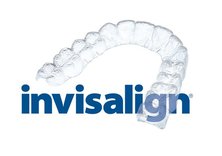
UNDERSTANDING BASIC DENTAL COVERAGE AND BENEFITS*
Our goal is to provide the finest care and treatment to all our patients at a reasonable cost in a safe, clean, comfortable, and friendly environment. All charges you incur for any treatment that is provided to you are your responsibility regardless of your insurance coverage. As a dental professional we will always recommend treatment based upon your dental needs and not based on insurance coverage. Some dental plans may not allow benefits for all available options even when your dentist determines that a specific treatment is in your best interest. The least expensive alternative is not always the best option. Please remember that your dental plan may not cover certain procedures or treatments regardless of their value to you.
Although we are willing to submit dental claims on your behalf, we do not accept responsibility for the outcome of the transaction. Completing insurance forms is a courtesy we extend in an effort to save you time and facilitate payment to our practice from your insurance company. By having our practice process the insurance forms, it is important that the patient and/or responsible party understand that this does not eliminate your financial obligation. Insurance payments are normally received within 30 to 60 business days from the time of billing. If the insurance company has not made payment to our practice within 60 days, we may ask the patient and/or responsible party to pay the entire balance at that time and it will be their responsibility for seeking reimbursement from your insurance company. It is the responsibility of the patient and/or responsible party for resolving any type of dispute over payments made or not made by your insurance company to our practice.
COVERAGE AND BENEFITS: Dental plans are designed to share the cost of dental care. Most dental plans are not insurance in the traditional sense because the customer is always called upon for partial payment of the services but it is better than paying the full amount. Please be aware that dental office staff cannot always answer specific questions about your dental benefits or predict the level of coverage for a particular procedure because dental plans written by the same benefits company or offered by the same employer may vary according to the contracts involved. It is the patient’s responsibility and/or the responsible party to understand the coverage and benefits of your specific dental plan. Your plan sponsor (often your employer for the subscriber) is usually in the best position or the insurance company to explain the individual features of your plan and answer questions about coverage and benefits.
ELIGIBILITY: Eligible for coverage are employees, spouses, and dependent children to the end of the year in which age 21 is reached, unless a fulltime student, in which case eligibility is extended to the end of the month in which age 24 is reached for most dental plans. The insurance company does not notify this office regarding eligibility. It is the patient’s responsibility to notify this office of any new dental plan, termination, or for any changes to your dental plan.
LIMITATIONS AND EXCLUSIONS: There are certain limitations and exclusions which may apply to your dental plan. For example, dentistry that is performed for cosmetic reasons (appearance only), Fluoride Treatments over age 19 and sealants over age 15 for most plans, and for any services provided or started prior to the effective date of the dental plan are NOT covered. Dentures, Bridges, Implants, and Crowns are normally limited to once within 5 or 7 years (per tooth for Crowns & Implants but implants may not be covered in lieu of a 3 unit Bridge). A waiting period for 6 months to 1 year may apply to some services for a new dental plan. In most cases, a new plan will have a 6 month waiting period for Type 2 services and 1 year for Type 3 services. A missing tooth clause may affect coverage and/or payment toward a post & core, crown, bridge, denture, or implant if the root canal on the tooth or the extracted tooth was performed before the effective date of the plan and/or is not on file with the insurance company. Some dental plans may include an alternative benefit or sometimes called a downgrade clause that may be applied to some services. Please be aware that a downgrade clause means that the insurance will pay for the "least expensive treatment" and the patient is responsible for the difference in cost. For example, some dental plans in rare cases will only pay for an amalgam filling (silver filling) toward the office charge of a multi surface posterior composite filling (white filling on the back teeth) and will result in a larger payment for the patient.
INSURANCE MAXIMUM: The maximum dollar amount the insurance company will pay toward the cost of ALL dental care incurred by an individual in a specific period, usually in a calendar year. Some dental plans with Orthodontic coverage will have a separate lifetime maximum on average of $1500.00 with a separate deductible. The average insurance maximum for most dental plans is $1500.00. Please be aware that any amount that goes over the maximum is the patient’s responsibility. Please contact the insurance company for the correct insurance maximum remaining on your dental plan.
PREDETERMINATION: If the cost of a service is expected to exceed $300, you can ask your dentist to submit a pre-treatment estimate in advance of treatment. It will return in around 30 days to you & the dentist indicating coverage, how much will be paid by your plan, and how much is your responsibility.
BASIC BREAKDOWN OF AN AVERAGE DENTAL PLAN:
Type 1 --100% -- PREVENTATIVE CARE: Most dental plans will cover a cleaning, checkup exam, and 2 bitewing x-rays once every 6 months from the date of your last cleaning and checkup exam under Preventative Coverage at 100% (deductible not applied in most cases). Most dental plans will also cover Fluoride treatment for children normally up to age 19 once every 6 months, sealants for children on unrestored permanent molars once per tooth, periapical x-rays and limited exams as needed, and a FMX (full set of x-rays) or a panoramic film once every 3, 5, or 7 years covered at 100%.
Type 2 -- 80% -- BASIC SERVICES: Most dental plans will cover Fillings, Deep Cleaning, Root Canal, Simple Extractions, Surgical Extractions, and to fix or repair major services under Basic Coverage at 80% with a patient copayment of 20% (deductible may apply).
Type 3 -- 50% -- MAJOR SERVICES: Most dental plans will cover a Post & Core, Crown Lengthening, Crown, Bridge, and Dentures under Major Coverage at 50% with a patient copayment of 50% (deductible may apply). Please be aware that some dental plans will cover ALL Dental Implant services (Implant D6010, Abutment D6056, and Implant Crown D6059) under MAJOR at 50%, Implant Crown ONLY at 50%, or NO dental coverage for all implant services {Note: In almost all cases, dental plans will not cover any bone graft procedure D7953}.
PATIENT PAYMENTS: We accept Visa, MasterCard, Discover, CareCredit, money order, cash, and check to better serve you. Any patient payment portion (patient co-payment and any deductible) is the patient’s responsibility and this amount will be collected when services are rendered unless prior financial arrangements have been made. Any multi-visit service requires a 50% deposit of your patient payment portion expected at the first visit and/or equal payments at each visit for this type of service to help cover any expenses and any remaining patient payment portion will be collected at the completion visit. We appreciate your business and thank you for providing your estimated patient payment responsibility at the time of service.
DEDUCTIBLE: Amount of expenses that is paid by the insured or patient before the insurance will pay for any covered expenses. Most dental plans will have a onetime per plan year deductible to each patient towards Basic or Major services. The deductible amount can range from around $25 to $100 but $50 is the most common deductible amount. Please be aware that the patient and/or responsible party are responsible for the deductible amount.
COPAYMENT: Most dental plans will only pay a percentage of the contracted fee for a covered service and the patient and/or responsible party is responsible for their percentage portion. This means that the insurance and the customer both pay some of the charges for dental work covered by their plan.
MAXIMUM ALLOWABLE FEE: This is a compensation arrangement in which a participating dentist agrees to accept a prescribed sum as the total fee for one or more covered services. An adjustment will be made when we receive the EOB from the insurance for any difference between our charge and the maximum allowable fee on covered services for a participating provider. Your dental benefits plan purchaser provides the final decision on "maximum levels” of reimbursement for services through its contract with the insurance company. The patient and/or responsible party are responsible for any unpaid claims, denied claims, and for any remaining balance on the account. Please contact your plan sponsor or insurance regarding any questions or concerns about payments.
EXPLANATION OF BENEFITS (EOB): Our estimate of your patient payment at the time of service is usually extremely accurate. In about 30 days you and the dentist will receive an EOB from the insurance usually indicating the services that are covered, any insurance payment to the provider, how much was paid by your dental plan, maximum used, and how much is your responsibility. In some cases, a difference in payment for the patient may occur due to the specific contract of your dental plan. Please contact your plan sponsor or the Insurance for questions or concerns regarding dental payments.
~~~~~~~~~~~~~~~~~~~~~~~~~~~~~~~~~~~~~~~~~~~~~~~~~~~~~~~~~~~~~~~~~~~~
* Updated 12/04/2012 * This is an explanation of dental coverage and benefits for the average dental plan at our office which may differ from your plan but it is being provided for patient educational purposes ONLY.








